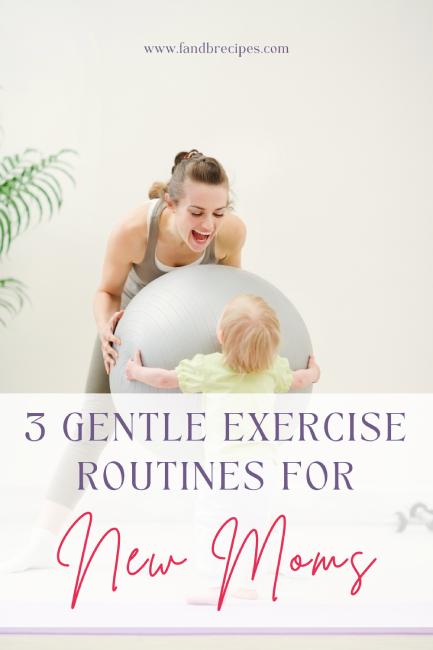3 Gentle Exercise Routines for New Moms
Starting a postpartum exercise routine is different for each mom and it’s important that you focus on what works for you. If you had an uncomplicated pregnancy and childbirth, you will be able to start exercising within a few days but if you had a C-section or a complicated birth, you may need a few more days to recover. Once you get the green light from your doctor, you should start to plan your exercise routine. A lot of new moms are eager to regain their pre-pregnancy bodies and push themselves too hard during their exercise routines and end up doing more harm than good. This is why starting slow is the most important aspect of any postpartum workout.
3 Exercises to Include in Your Routine
Before you start your exercise routine, make sure that you’re dressed for it. After childbirth, your skin will be very sensitive so seamless leggings would be the way to go – this is a good idea whether you’ve had a c-section or a vaginal delivery.
Postpartum leggings would be your best bet since they are high-waisted and provide support to your belly and back for more comfortable workouts. There are plenty of leggings in the market so comparing the best postpartum leggings will help you make a decision. Once you’ve got your workout clothes sorted, you’re ready to start your daily routine. Here are a few exercises that you should include:
1. Walking
Whether you were active before and during your pregnancy or not, walking is still the best starting point. It is low-impact so it’s easy on your joints which is particularly important when you’re still recovering from childbirth. You can start with a short walk at a pace that suits you and after a few days, you can increase your pace. You can gradually increase the duration of your walks, which will improve your circulation and help your body heal.
According to the recommendations from ACOG (The American College of Obstetricians and Gynecologists), you should aim for 150 minutes of moderate-intensity aerobic activity every week. Moderate-intensity means that you will be able to talk normally while exercising but you won’t be able to sing. Start with a short 10-minute session a day and then increase it to multiple sessions throughout your day.
2. Bodyweight Exercises
Bodyweight exercises are a simple way to include strength-building or resistance training in your workouts. As the name suggests, with bodyweight exercises, you use your own weight to provide resistance against gravity. One of the benefits of these exercises is that you don’t need to invest in equipment like dumbbells or resistance bands.
Bodyweight exercises gradually increase your strength, endurance, flexibility, and coordination without putting too much strain on your body. You can start with wall pushups, squats, side lunges and leg lifts. Once you are comfortable with your exercise routine, you can add burpees, push-ups, and plank to your workout.
3. Pelvic Floor Exercises
Pelvic floor exercises or Kegels help to strengthen the pelvic floor muscles which are weakened during pregnancy and childbirth. Doing these exercises on a daily basis may also promote blood circulation to the perineal area to help heal tissues that were damaged or torn during delivery. Weak pelvic floor muscles can also cause incontinence which is why many women experience urinary incontinence after they give birth.
To do pelvic floor exercises, you need to tighten your pelvic floor muscles – as if you are trying to prevent urination. Hold this for a count of 10 before relaxing the muscles. You should aim to do 10 repetitions 3 to 5 times a day. It takes about 4 weeks to notice some improvement but as long as 3 months to see significant change.
In Conclusion
As a new mom, it’s best to exercise just after you’ve breastfed your baby so that you’re more comfortable. You should also drink water before and after you exercise so that you stay hydrated. It’s important to listen to your body and stop your workout if you experience any pain, especially in your abdomen or pelvic area. Your workouts should leave you feeling a little tired but invigorated. If you notice that you are fatigued, it’s likely that you are overexerting and you should dial it down.




